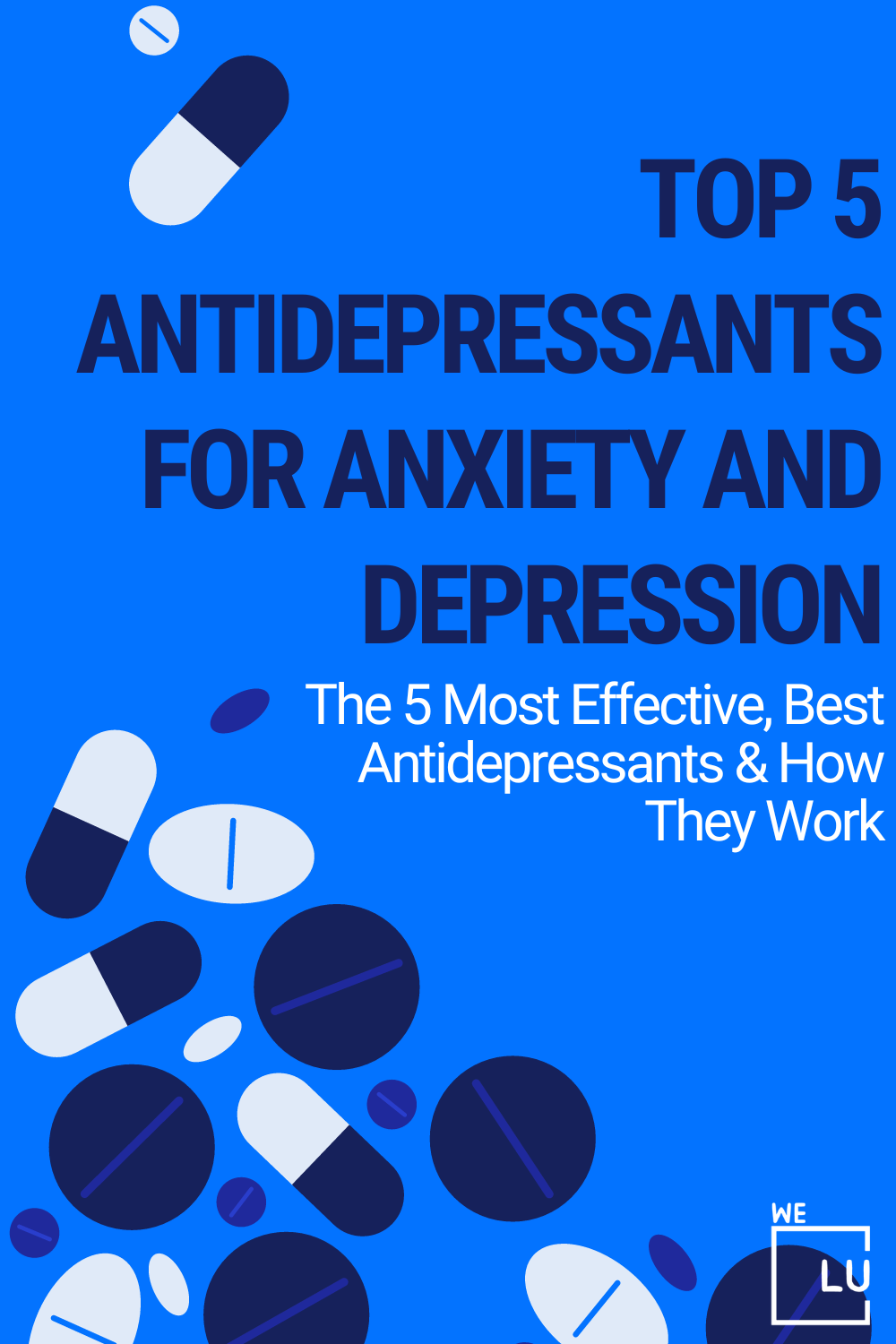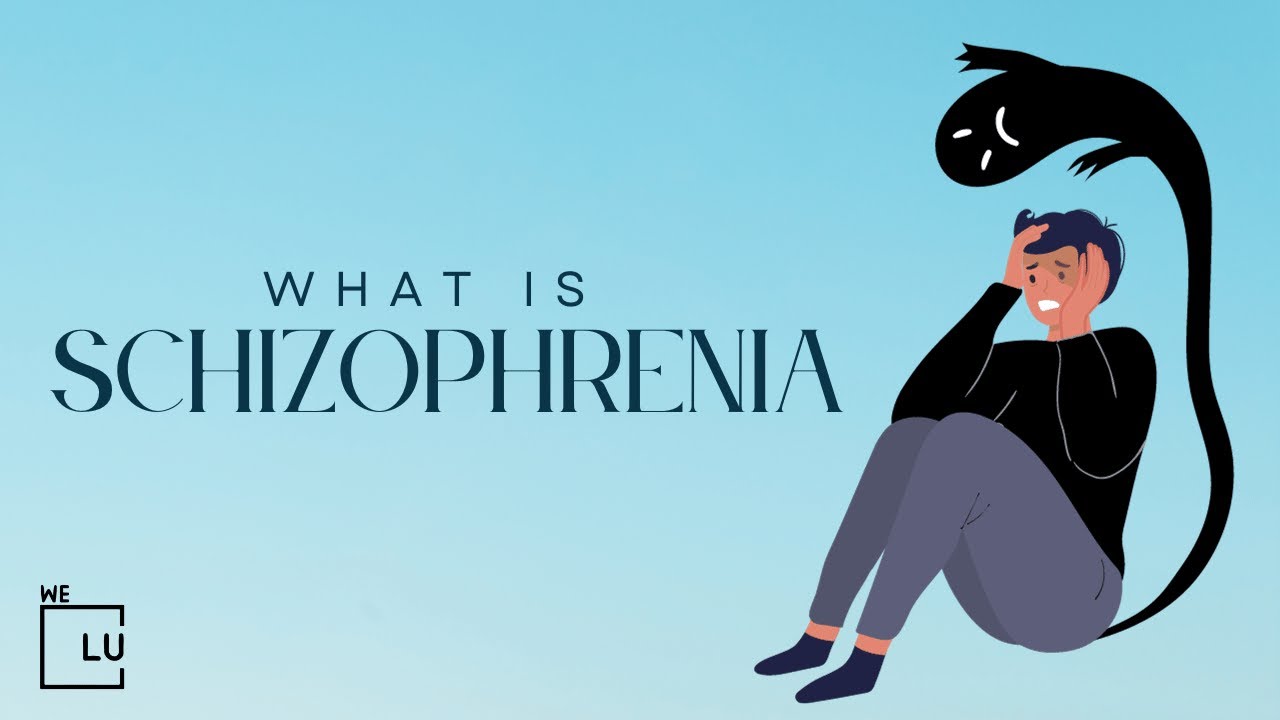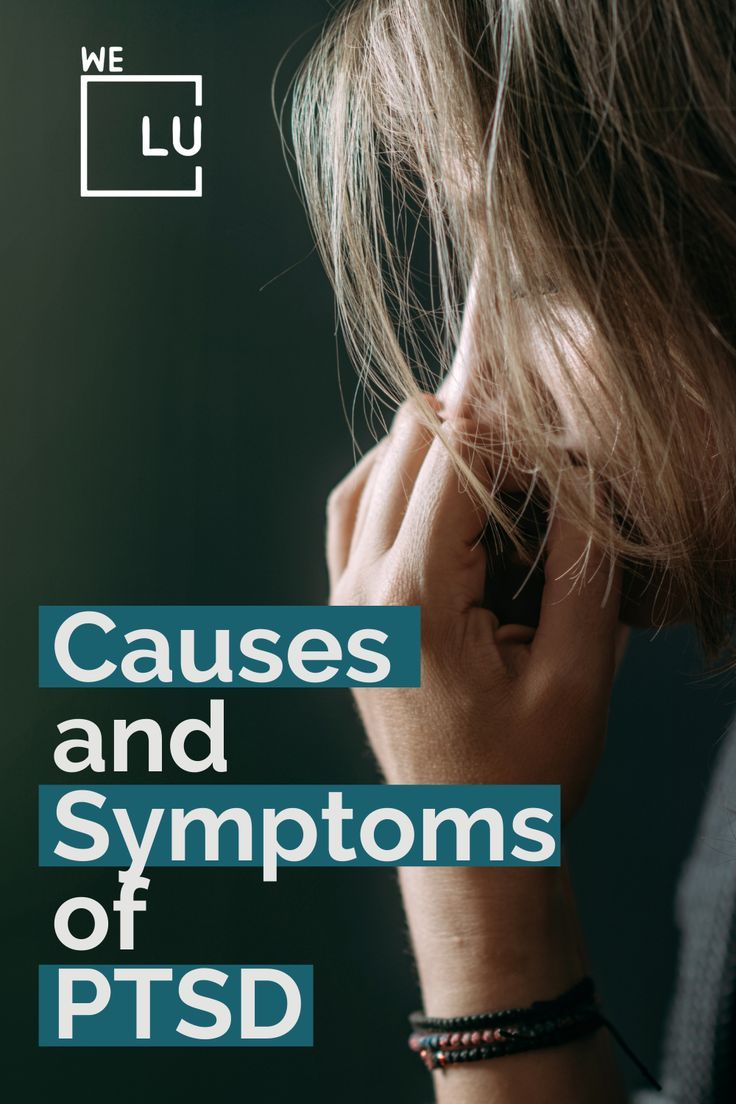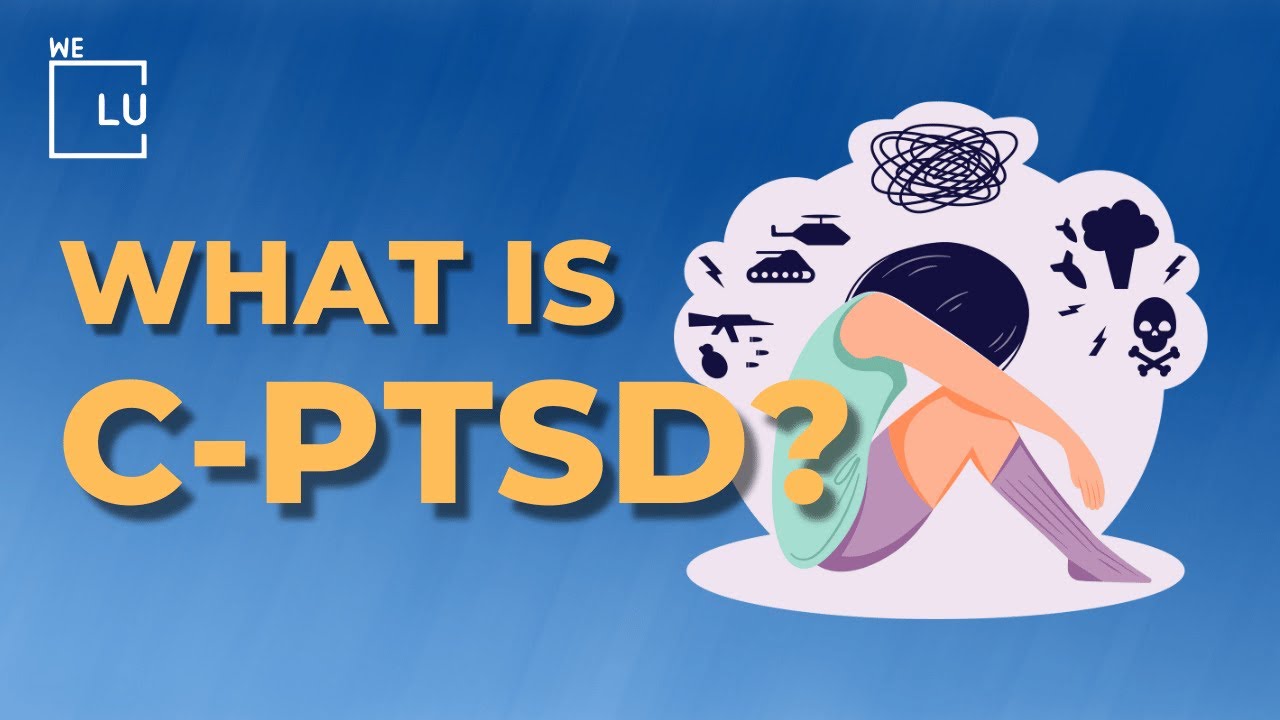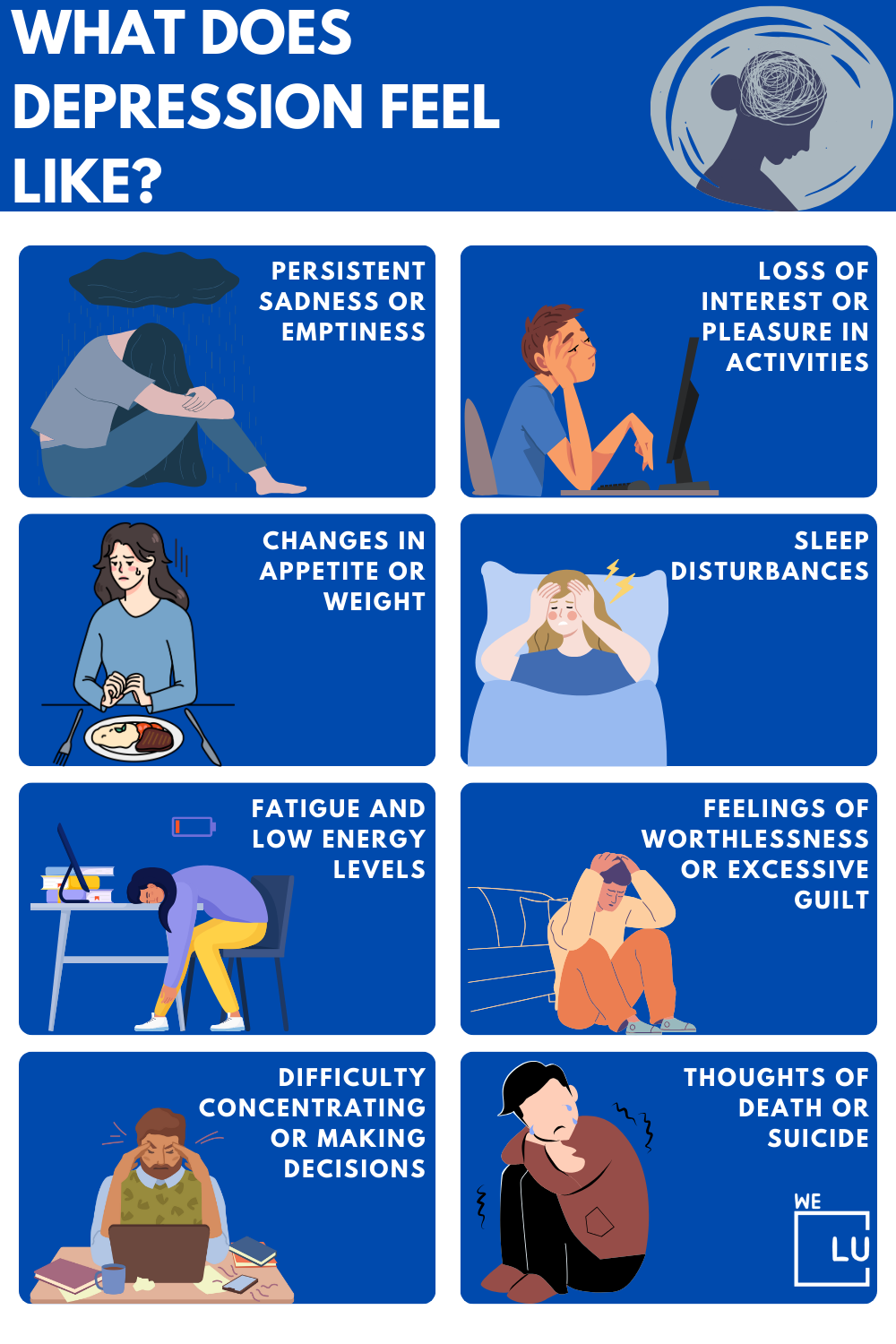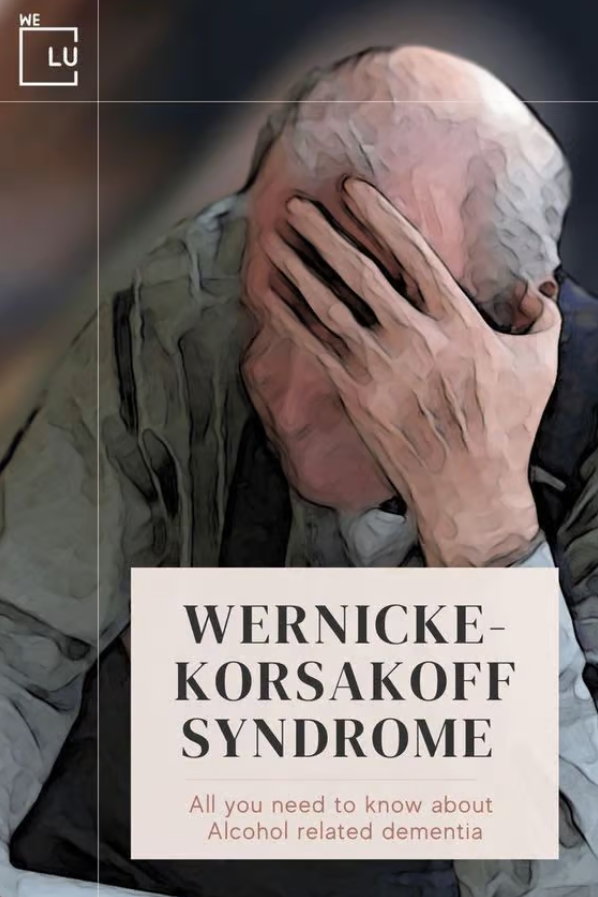What is Endogenous Depression?
Endogenous depression is a type of major depressive disorder (MDD). Although it used to be seen as a distinct disorder, endogenous depression is now rarely diagnosed. Instead, it’s currently diagnosed as MDD. MDD, also known as clinical depression, is a mood disorder characterized by persistent and intense sadness for extended periods. These feelings harm mood, behavior, and various physical functions, including sleep and appetite. Nearly 7% [1] of adults in the United States experience MDD yearly. Researchers don’t know the exact cause of depression. However, they believe that a combination of:
- Genetic factors
- Biological factors
- Psychological factors
- Environmental factors
What is endogenous depression definition? Some people become depressed after losing a loved one, ending a relationship, or experiencing trauma. However, endogenous depression occurs without an apparent stressful event or other triggers. Symptoms often appear suddenly and for no apparent reason.
The depressive mood in endogenous depression may be an inhibition of various kinds of emotion, which can never be experienced within a normal emotional state. Thus, it is thought to be incomprehensible. [2]
Traditional diagnoses of major depressive disorder (MDD) suggested that the presence or absence of stress before onset results in either ‘reactive’ or ‘endogenous’ subtypes, respectively. Several lines of research indicate that the biological underpinnings of ‘reactive’ or ‘endogenous’ subtypes may also differ, resulting in differential responses to depression treatment.
Your primary care provider or mental health professional can diagnose chronic endogenous depression. They’ll first ask you about your medical history. Make sure to notify them about any medications you’re taking and any existing medical or mental health conditions. It’s also helpful to tell them if your family members have MDD or have had it.
Most people with MDD get better when they stick to their treatment plan. It typically takes several weeks to see an improvement in symptoms after beginning a regimen of antidepressants. Others may need to try a few different antidepressants before noticing a change. The length of recovery also depends on how early treatment is received.
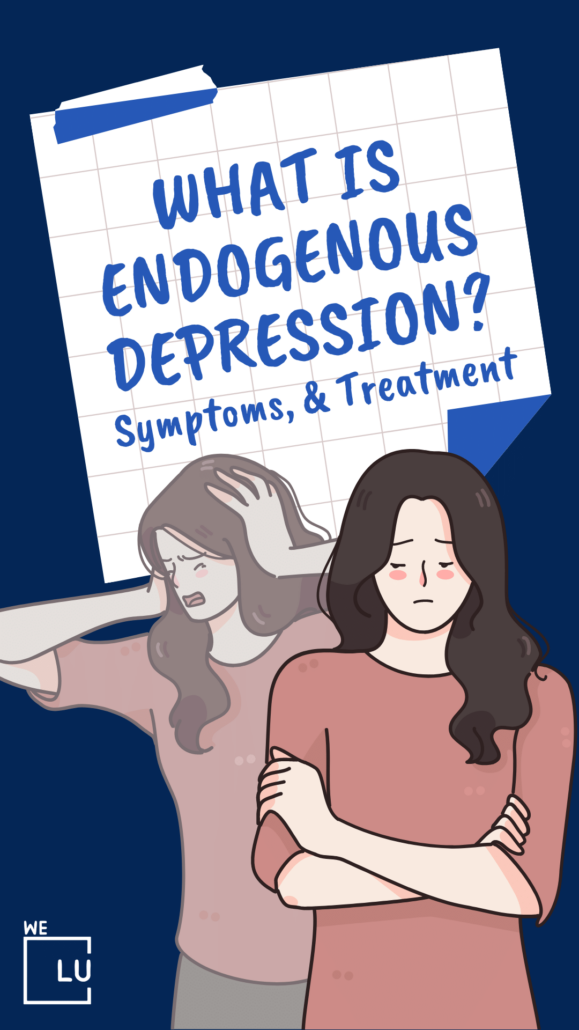
Skip to:
Learn More:
- Holiday Depression Quotes
- High Functioning Depression
- Rehab for Depression
- Depression at an All-Time High
- Help a Friend with Depression
- Covid Depression
- Depression and Anxiety Quotes
- Covid 19 Depression
- Holiday Depression
- How to Help Someone with Drug Addiction and Depression?
- Postpartum Depression Treatment
- Depression Treatment
Get Help. Get Better. Get Your Life Back.
Searching for Accredited Dual Diagnosis Mental Health Centers Near You?
Even if therapy failed previously, or are in the middle of a difficult crisis, we stand ready to support you. Our trusted behavioral health specialists will not give up on you. When you feel ready or just want someone to speak to about counseling alternatives to change your life call us. Even if we cannot assist you, we will lead you to wherever you can get support. There is no obligation. Call our hotline today.
FREE 24/7 Dual Diagnosis Mental Health Services HotlineDepression Disorder Facts Sheet
Also called: Clinical depression, Dysthymic disorder, Major depressive disorder, Unipolar depression
Depression is a severe medical illness. It’s more than just feeling sad or “blue” for a few days. If you are one of the more than 19 million young adults in the United States who have depression, the feelings do not go away. They persist and interfere with your everyday life. Symptoms can include:
- Feeling sad or “empty”
- Loss of interest in favorite activities
- Overeating, or not wanting to eat at all
- Not being able to sleep or sleeping too much
- Feeling very tired
- Feeling hopeless, irritable, anxious, or guilty
- Aches or pains, headaches, cramps, or digestive problems
- Thoughts of death or suicide
Depression is a disorder of the brain. There are a variety of causes, including genetic, biological, environmental, and psychological factors. Depression can happen at any age, but it often begins in teens and young adults. It is much more common in women. Women can also get postpartum depression after the birth of a baby. Some people get seasonal affective disorder in the winter. Depression is one part of bipolar disorder.
There are effective treatments for depression, including antidepressants, talk therapy, or both.
[4] Source: Depression – U.S. Department of Health and Human Services National Institutes of Health
Depression Disorder Statistics
According to the National Institute of Mental Health, major depression is one of the most common mental disorders in the United States. For some individuals, major depression can result in severe impairments that interfere with or limit one’s ability to carry out major life activities. [3]
21.0 Million
In 2020, an estimated 21.0 million adults in the United States had at least one major depressive episode. This number represented 8.4% of all U.S. adults.
Source: NIMH
64%
Adults with a depressive disorder or episodes have a 64% greater risk of developing coronary artery disease.
Source: NIH
2nd
Mental Health (Depression, grief, and behavioral conduct) is the second leading workplace concern, following only family issues.
Source: Employee Assistance Professionals Association Survey, 2017
How Does Endogenous Depression Differ From Exogenous Depression?
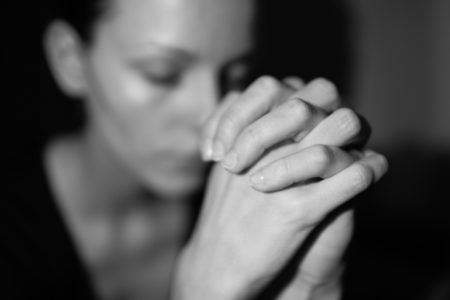
Researchers used to differentiate endogenous depression and exogenous depression by the presence or absence of a stressful event before the onset of MDD
- Endogenous depression occurs without the presence of stress or trauma. In other words, the definition of endogenous depression is it has no apparent outside cause. Instead, it may be primarily caused by genetic and biological factors. This is why endogenous depression might also be referred to as “biologically based” depression.
- Exogenous depression happens after a stressful or traumatic event takes place. This type of depression is more commonly called “reactive” depression. Endogenous depression is less serious than exogenous depression.
Mental health professionals used to differentiate between these two types of MDD, but this is no longer the case. Instead, most mental health professionals now make a general MDD diagnosis based on specific symptoms and not on the difference between exogenous and endogenous depression.
What is Depression?
Depression (major depressive disorder) is a common and serious medical illness that negatively affects how you feel, think, and act. Fortunately, it is also treatable. Endogenous and exogenous depression cause sadness and a loss of interest in activities you once enjoyed. In addition, it can lead to various emotional and physical problems and decrease your ability to function at work and at home.
Depression symptoms can vary from mild to severe and can include the following:
- Feeling sad or having a depressed mood.
- Loss of interest or pleasure in activities once enjoyed
- Changes in appetite — weight loss or gain unrelated to dieting
- Trouble sleeping or sleeping too much
- Feeling worthless or guilty
- Loss of energy or increased fatigue
- Increase in purposeless physical activity (e.g., inability to sit still, pacing, hand-wringing) or slowed movements or speech (these actions must be severe enough to be observable by others)
- Difficulty thinking, concentrating, or making decisions.
- Thoughts of death or suicide
The American Psychiatric Association’s Diagnostic Statistical Manual of Mental Disorders, Fifth Edition (DSM-5) classifies depressive disorders into:
- Disruptive mood dysregulation disorder
- Major depressive disorder
- Persistent depressive disorder (dysthymia)
- Premenstrual dysphoric disorder
- Depressive disorder due to another medical condition
The common features of endogenous and reactive depression are sadness, emptiness, or irritable mood, accompanied by somatic and cognitive changes that significantly affect the individual’s capacity to function. Because of false perceptions, nearly 60% of people with depression do not seek medical help. Many feel that the stigma of a mental health disorder is unacceptable in society and may hinder personal and professional life. There is good evidence indicating that most antidepressants do work, but the individual response to treatment may vary. [3]
Define Endogenous Depression
Endogenous depression meaning is the same as melancholia. It is an atypical major depressive disorder (clinical depression) sub-class. Genetic and biological factors could cause it. Endogenous depression occurs due to an internal stressor instead of an external (social, environmental) stressor. Endogenous depression includes patients with a treatment-resistant, non-psychotic, major depressive disorder characterized by abnormal behavior of the endogenous opioid system but not the monoaminergic system.
- Monoaminergic systems include the dopaminergic (DA), noradrenergic (NA), serotonergic (5-HT), and histaminergic (HA) circuitries, which start to differentiate during late embryogenesis. Impaired monoaminergic signaling underlies many behavioral and neurodegenerative disorders in humans.
- The endogenous opioid system is one of the most studied innate pain-relieving systems. This system consists of widely scattered neurons that produce three opioids: beta-endorphin, the met- and leu-enkephalins, and the dynorphins.
Endogenous major depression symptoms vary in severity, type, and frequency and can be attributed to cognitive, social, biological, or environmental factors that result in persistent feelings of sadness and distress. Since symptoms are due to a biological phenomenon, prevalence rates tend to be higher in older adults. Due to this, biological-focused treatment plans are often used in therapy to ensure the best prognosis.

Endogenous Depression Causes
Without stress or trauma, “depression endogene” can arise. In other words, there is no obvious external explanation for it. Instead, it can be predominantly brought on by biological and genetic factors. This is why “biologically based” depression may also be used to describe endogenous depression. Exogenous depression develops following a severe or stressful incident. Reactive depression is a more popular name for this type of depression. However, mental health specialists no longer differentiate between these two types of MDD. The majority of mental health experts now diagnose MDD as a whole based on specific symptoms, not on the difference between endogenous and exogenous depression.
Endogenous Depression ICD 10 indicates that major depressive disorder is recurrent and severe without psychotic features. ICD means International Classification of Diseases (ICD) 10th revision.

End the Emotional Pain. Get Your Life Back.
Feeling Depressed, Anxious or Struggling with Mental Health Illness? Get Safe Comfortable Mental Health Dual Diagnosis High-Quality Therapy From Counselors That Care. Begin Your Recovery Now.
Hotline (855) 940-6125What are the Symptoms of Endogenous Depression?
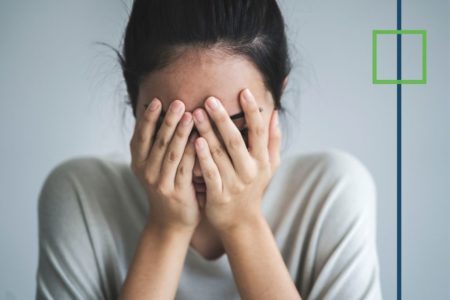
People with “endogene depression” can experience symptoms suddenly and for no apparent reason. The type, frequency, and severity of symptoms may vary from person to person. The symptoms of endogenous depression are similar to those of MDD. Endogenous depression symptoms may include:
- Persistent feelings of sadness or hopelessness
- Loss of interest in activities or hobbies that were once pleasurable, including sex
- Fatigue
- Lack of motivation
- Trouble concentrating, thinking, or making decisions
- Difficulty falling asleep or staying asleep
- Social isolation
- Thoughts of suicide
- Headaches
- Muscle aches
- Loss of appetite or overeating
Endogenous Depression Example
It’s believed that some people are born with an underlying personality that makes them more vulnerable to episodes of depression. When this type of depression occurs, it’s classified as endogenous depression because it’s genetic or biological. Consider it in contrast to exogenous depression, which is primarily a result of things going on in the world around a person.
For example, people with endogenous depression may not know why they suddenly started feeling melancholic. There might not be any reason for the depression, yet they can’t shake it. In contrast, exogenous depression is usually triggered by a particularly stressful event and subsides when that event or environment passes. An example of this would be recovering from the breakup of a romantic relationship.
Endogenous vs Exogenous Depression
The old belief was that the distinction was necessary and that each type of depression had to be treated differently. Today, depression, formerly referred to as “endogenous,” is known as major depressive disorder (MDD). The current philosophy is that the same types of treatment can be used for MDD, whether “endogenous or exogenous.”
When assisting patients in understanding serious depression, it might still be beneficial for medical and mental health practitioners to mention the idea of endogenous depression vs exogenous depression.
Symptoms of endogenous depression include feelings of sadness, worthlessness, guilt, and an inability to enjoy normally pleasurable things. You may also notice changes in your appetite, sleep patterns, and energy levels.
If you have endogenous depression, the world may seem dark and sad because that’s how you feel within yourself.
Exogenous depression can look and feel much like endogenous depression. The difference is that these symptoms occur after something happens in a person’s life. For example, a person may feel persistently sad after the death of a loved one or struggle with guilt and feelings of worthlessness after losing their job.
Exogenous depression can make the world seem dark and sad because of what’s happening around you rather than in you.
Endogenous vs Reactive Depression
Situational depression is a short-term, stress-related type of depression. It can develop after you experience a traumatic event or series of events. Situational depression is a type of adjustment disorder. It can make it hard for you to adjust to your everyday life following a traumatic event. It’s also known as reactive depression.
Events that can cause situational depression include:
- Problems at work or school
- Illness
- Death of a loved one
- Moving
- Relationship problems
“Non endogenous depression symptoms” appear after you experience a stressful event or series of events, unlike endogenous depression. According to the new edition of the Diagnostic and Statistical Manual of Mental Disorders (DSM-5), you may have reactive depression if:
- You have emotional or behavioral symptoms that develop within three months of a stressful life event
- You feel more stress than normal after a stressful life event
- Stress causes severe issues in your interpersonal relationships or at work or school
- You have depression symptoms that are not caused by another mental health disorder or part of the normal grieving process after the death of a loved one
First-class Facilities & Amenities
World-class High-Quality Mental Health Services & Behavioral Health Substance Abuse Treatment
Rehab Centers TourRenowned Mental Health Centers. Serene Private Facilities. Inpatient Rehab Programs Vary.
Mental Health Helpline (855) 940-6125Proven recovery success experience, backed by a Team w/ History of:
15+
Years of Unified Experience
100s
5-Star Reviews Across Our Centers
10K
Recovery Successes
- Comprehensive Dual-Diagnosis Treatment
- Complimentary Family & Alumni Programs
- Coaching, Recovery & Development Events
- Comfortable Onsite Medical Detox Center
How is Endogenous Depression Diagnosed?
Your primary care provider or mental health professional can diagnose MDD. They’ll first ask you about your medical history. Ensure them about any medications you’re taking and about any existing medical or mental health conditions. It’s also helpful to tell them if your family members have MDD or have had it.
Your healthcare provider will also ask you about your symptoms. For example, they’ll want to know when the symptoms started and if they began after they experienced a stressful or traumatic event. Your healthcare provider may also give you a series of questionnaires that examine how you’re feeling. These questionnaires can help them determine whether they have MDD.
To be diagnosed with MDD, you must meet specific criteria in the Diagnostic and Statistical Manual of Mental Disorders (DSM). Mental health professionals often use this manual to diagnose mental health conditions. The main criteria for an MDD diagnosis are “depressed mood or a loss of interest or pleasure in daily activities for more than two weeks.”
The process of being diagnosed with depression usually involves several key components. It often begins with you being asked questions about:
- How do you feel physically and emotionally?
- What your day-to-day life is like?
- Whether anyone in your family has a mental health condition?
- What your diet and lifestyle, and social activities are like?
- What do you do for work?
- Whether you take any medications that you take or substances?
Although the manual distinguishes between endogenous and exogenous forms of depression, the current version no longer provides that distinction. As a result, mental health professionals might diagnose endogenous depression if symptoms of MDD develop for no apparent reason.
How is Endogenous Depression Treated?
Once a diagnosis is established, the providers in charge of your care will begin working on a treatment plan. Remember that the most effective treatment for you won’t necessarily be the same as what works for someone with depression, and you may need to try more than one treatment.
Behavioral Treatment
Overcoming MDD isn’t easy, but symptoms can be treated with medication and therapy.
- Medications
The most common medications used to treat people with MDD include selective serotonin reuptake inhibitors (SSRIs) and selective serotonin and norepinephrine reuptake inhibitors (SNRIs). In addition, some people may be prescribed tricyclic antidepressants (TCAs), but these drugs aren’t used as extensively as they once were. These medications increase levels of certain brain chemicals that result in a decrease in depressive symptoms.
SSRIs are a type of antidepressant medication that people may take with MDD. Examples of SSRIs include:
- Paroxetine (Paxil)
- Fluoxetine (Prozac)
- Sertraline (Zoloft)
- Escitalopram (Lexapro)
- Citalopram (Celexa)
SSRIs may cause headaches, nausea, and insomnia at first. However, these side effects usually go away after a short period.
SNRIs are another type of antidepressant medication that can treat people with MDD. Examples of SNRIs include:
- Venlafaxine (Effexor)
- Duloxetine (Cymbalta)
- Desvenlafaxine (Pristiq)
In some cases, TCAs might be used as a treatment method for people with MDD. Examples of TCAs include:
- Trimipramine (Surmontil)
- Imipramine (Tofranil)
- Nortriptyline (Pamelor)
The side effects of TCAs can sometimes be more severe than those from other antidepressants. TCAs may cause drowsiness, dizziness, and weight gain. Carefully read the information provided by the pharmacy and speak to your doctor if you have any concerns. The medication usually needs to be taken for a minimum of four to six weeks before symptoms begin to improve. Sometimes, it can take up to 12 weeks to improve symptoms.
If a particular medication doesn’t seem to work, talk to your provider about switching to another medication. According to the National Institute of Mental Health [4] (NAMI), people who didn’t get better after taking their first antidepressant medication had a much better chance of improving when they tried another medication or a combination of treatments.
Even when symptoms begin to improve, you should continue taking your medication. It would be best if you stopped taking medication under the provider’s supervision who prescribed it. You may have to stop the drug gradually instead of all at once. Suddenly stopping an antidepressant can lead to withdrawal symptoms. Symptoms of MDD can also return if your exogenous and endogenous depression treatment is ended too soon.

World-class, Accredited, 5-Star Reviewed, Effective Mental Health Dual Diagnosis Programs. Complete Integrated Inpatient Rehab with Free Post Discharge Therapy Planning.
CALL (855) 940-6125End the Emotional Pain Rollercoaster. Gain Stability & Happiness Through Recovery Treatment. Start Mental Health Counseling Today. Get Free No-obligation Guidance by Behaviroal Health Specialists Who Understand Mental Health Recovery.
- Therapy
Psychotherapy, also known as talk therapy, involves meeting with a therapist regularly. This therapy can help you cope with your condition and related issues. The two main types of psychotherapy are cognitive behavioral therapy (CBT) and interpersonal therapy (IPT). CBT can help you replace negative beliefs with healthy, positive ones. You can improve your brain’s response to negative situations by deliberately practicing positive thinking and limiting negative thoughts. IPT may help you work through troubling relationships contributing to your condition.
In most cases, a combination of medication and therapy effectively treats people with MDD.
3. Lifestyle Changes
Adjustments to your lifestyle and everyday activities can also help improve symptoms of endogenous depression. Even if the activities aren’t enjoyable, your body and mind will adapt over time. Here are some things to try:
- Go outside and do something active, such as hiking or biking.
- Participate in activities that you enjoyed before you became depressed.
- Spend time with other people, including friends and loved ones.
- Write in a journal.
- Get at least six hours of sleep each night.
- Maintain a healthy diet that consists of whole grains, lean protein, and vegetables.
Experience Transformative Recovery at the We Level Up Treatment Center.
See our authentic success stories. Get inspired. Get the help you deserve.



Start a New Life
Begin with a free call to a behavioral health treatment advisor. Learn more about our dual-diagnosis programs. The We Level Up treatment center network delivers recovery programs that vary by each treatment facility. Call to learn more.
- Personalized Care
- Caring Accountable Staff
- Comfortable Amenities
- Licensed & Accredited
- Renowned w/ 5-Star Reviews
We’ll Call You
The We Level Up FL primary mental health center stands ready to help. We Level Up FL can inspire a support system through our mental health treatments to make you feel valuable. You can trust the treatment backed by leading recovery specialists practicing evidence-based therapy. We Level Up FL Treatment Center offers therapy under one roof. Get comprehensive therapy for mind, body & spirit.
Call us now for a free mental health assessment! In addition, for the substance abuse or dual diagnosis approach, our inpatient treatment, inpatient medical detox, and residential primary addiction treatment may be available at our affiliated facility. For more endogenous depression treatment resources, call us about your symptoms, and we can help you determine the cause and develop a treatment plan.
We Level Up Treatment Center provides world-class care with round-the-clock medical professionals available to help you cope. We work as an integrated team providing information about endogenous depression and other aspects of treatment. Make this your opportunity to reclaim your life. Call today to speak with one of our treatment specialists. Our specialists know what you are going through and answer any of your questions.
Your call is private and confidential, and there is never any obligation.
Search We Level Up FL “What is Endogenous Depression?” Mental Health Topics & Resources
Sources
[1] Depression – (NIMH) National Institute of Mental Health
[2] Matsunami K. [The clinical meaning and academic significance of “endogenous depression” as an ideal type]. Seishin Shinkeigaku Zasshi. 2013;115(3):267-76. Japanese. PMID: 23691813.
[3] Chand SP, Arif H. Depression. [Updated 2022 Jul 18]. In: StatPearls [Internet]. Treasure Island (FL): StatPearls Publishing; 2022 Jan-. Available from: https://www.ncbi.nlm.nih.gov/books/NBK430847/
[4] InformedHealth.org [Internet]. Cologne, Germany: Institute for Quality and Efficiency in Health Care (IQWiG); 2006-. Depression: How effective are antidepressants? [Updated 2020 Jun 18]. Available from: https://www.ncbi.nlm.nih.gov/books/NBK361016/
[5] Bains N, Abdijadid S. Major Depressive Disorder. [Updated 2022 Jun 1]. In: StatPearls [Internet]. Treasure Island (FL): StatPearls Publishing; 2022 Jan-. Available from: https://www.ncbi.nlm.nih.gov/books/NBK559078/
[6] Medical Encyclopedia → Depression – U.S. Department of Health and Human Services National Institutes of Health
[7] Chand SP, Arif H. Depression. [Updated 2022 Jul 18]. In: StatPearls [Internet]. Treasure Island (FL): StatPearls Publishing; 2022 Jan-. Available from: https://www.ncbi.nlm.nih.gov/books/NBK430847/
[8] InformedHealth.org [Internet]. Cologne, Germany: Institute for Quality and Efficiency in Health Care (IQWiG); 2006-. Depression: How effective are antidepressants? [Updated 2020 Jun 18]. Available from: https://www.ncbi.nlm.nih.gov/books/NBK361016/
[9] Bains N, Abdijadid S. Major Depressive Disorder. [Updated 2022 Jun 1]. In: StatPearls [Internet]. Treasure Island (FL): StatPearls Publishing; 2022 Jan-. Available from: https://www.ncbi.nlm.nih.gov/books/NBK559078/
[10] Medical Encyclopedia → Depression – U.S. Department of Health and Human Services National Institutes of Health
